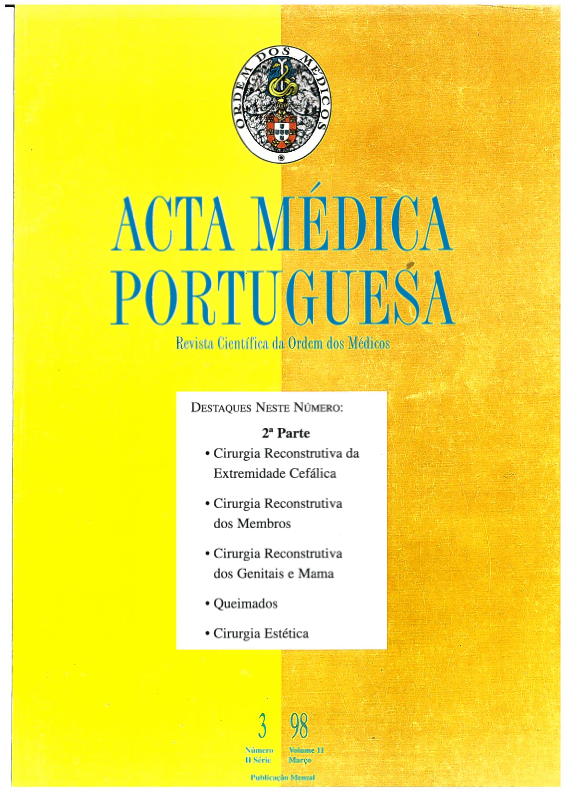Paralisia facial. Técnicas de reconstrução neuro-muscular.
DOI:
https://doi.org/10.20344/amp.2232Resumo
Several surgical procedures have been proposed through the years for the treatment of facial paralysis. The multiplicity and diversity of techniques portray the complexity and challenge represented by this pathology. Two basic dynamic options are available: -Reconstruction of nerve continuity through direct micro suture, with interposition grafts or nerve transpositions. -Regional muscular transposition, most often using the temporalis. Facial reanimation with the temporalis transfer has withstood the test of time and still is a reference technique. In a few weeks, good results can be obtained with a single and rather simple surgical procedure. Functional free flaps have been used with increasing frequency in the last two decades, most often combining a cross-facial nerve graft followed by a gracilis free flap nine months later. With this method there is a potential for restoration of spontaneous facial mimetic function. Apparently there is a limit in microsurgical technique and expertise beyond which there is no clear improvement in nerve regeneration. Current research is now actively studying and identifying nerve growth factors and pharmacological agents that might have an important and complementary role in the near future.Downloads
Downloads
Como Citar
Edição
Secção
Licença
Todos os artigos publicados na AMP são de acesso aberto e cumprem os requisitos das agências de financiamento ou instituições académicas. Relativamente à utilização por terceiros a AMP rege-se pelos termos da licença Creative Commons ‘Atribuição – Uso Não-Comercial – (CC-BY-NC)’.
É da responsabilidade do autor obter permissão para reproduzir figuras, tabelas, etc., de outras publicações. Após a aceitação de um artigo, os autores serão convidados a preencher uma “Declaração de Responsabilidade Autoral e Partilha de Direitos de Autor “(http://www.actamedicaportuguesa.com/info/AMP-NormasPublicacao.pdf) e a “Declaração de Potenciais Conflitos de Interesse” (http://www.icmje.org/conflicts-of-interest) do ICMJE. Será enviado um e-mail ao autor correspondente, confirmando a receção do manuscrito.
Após a publicação, os autores ficam autorizados a disponibilizar os seus artigos em repositórios das suas instituições de origem, desde que mencionem sempre onde foram publicados e de acordo com a licença Creative Commons









